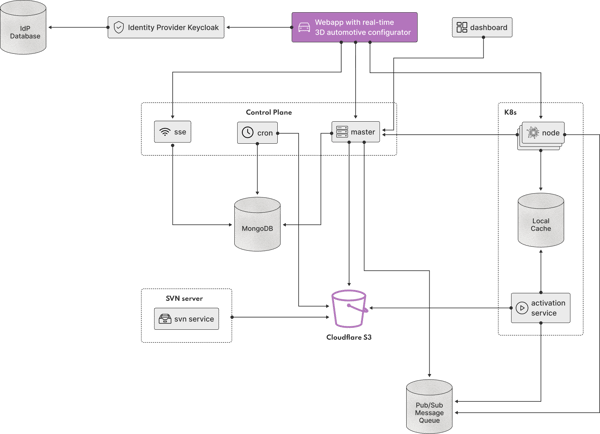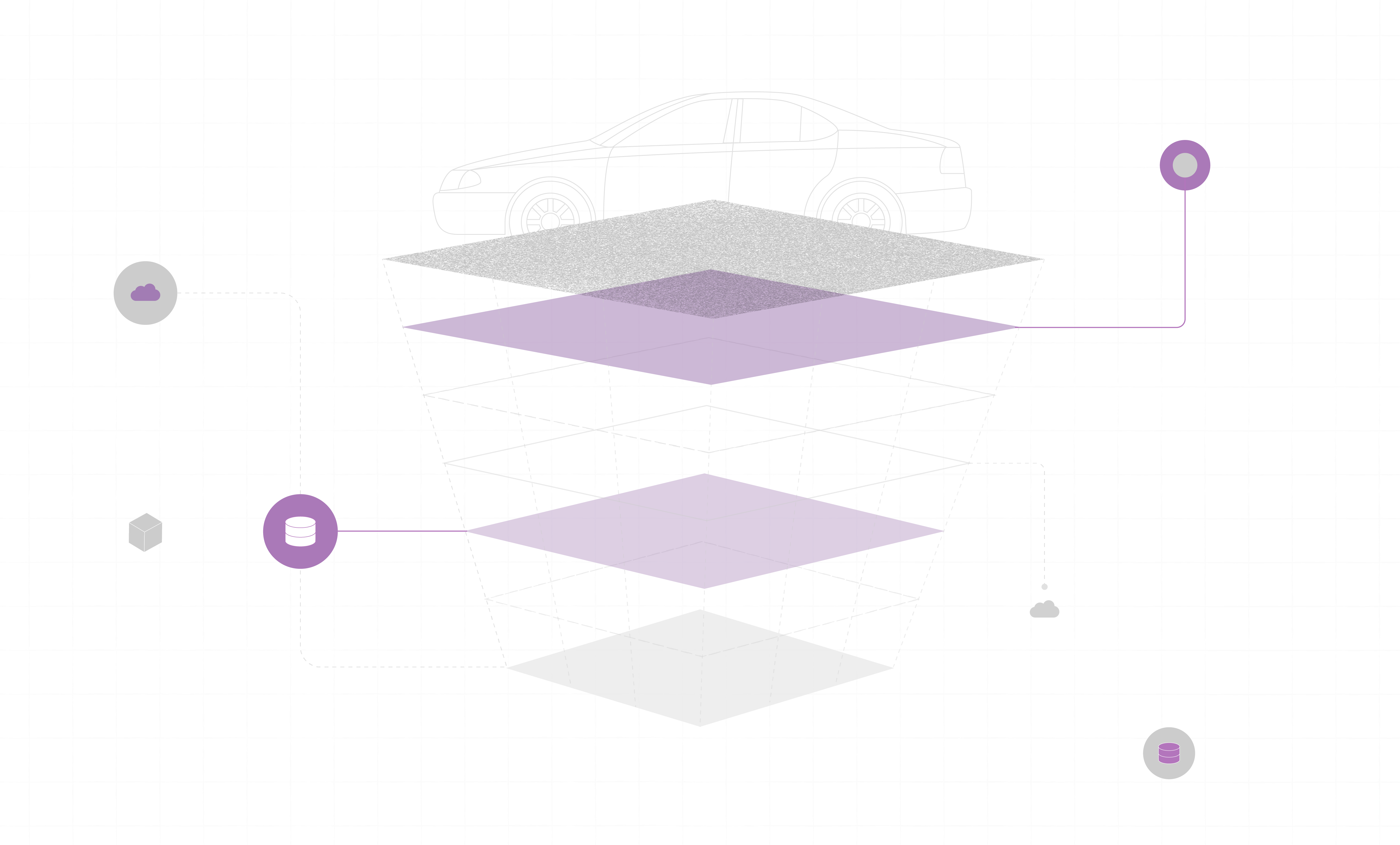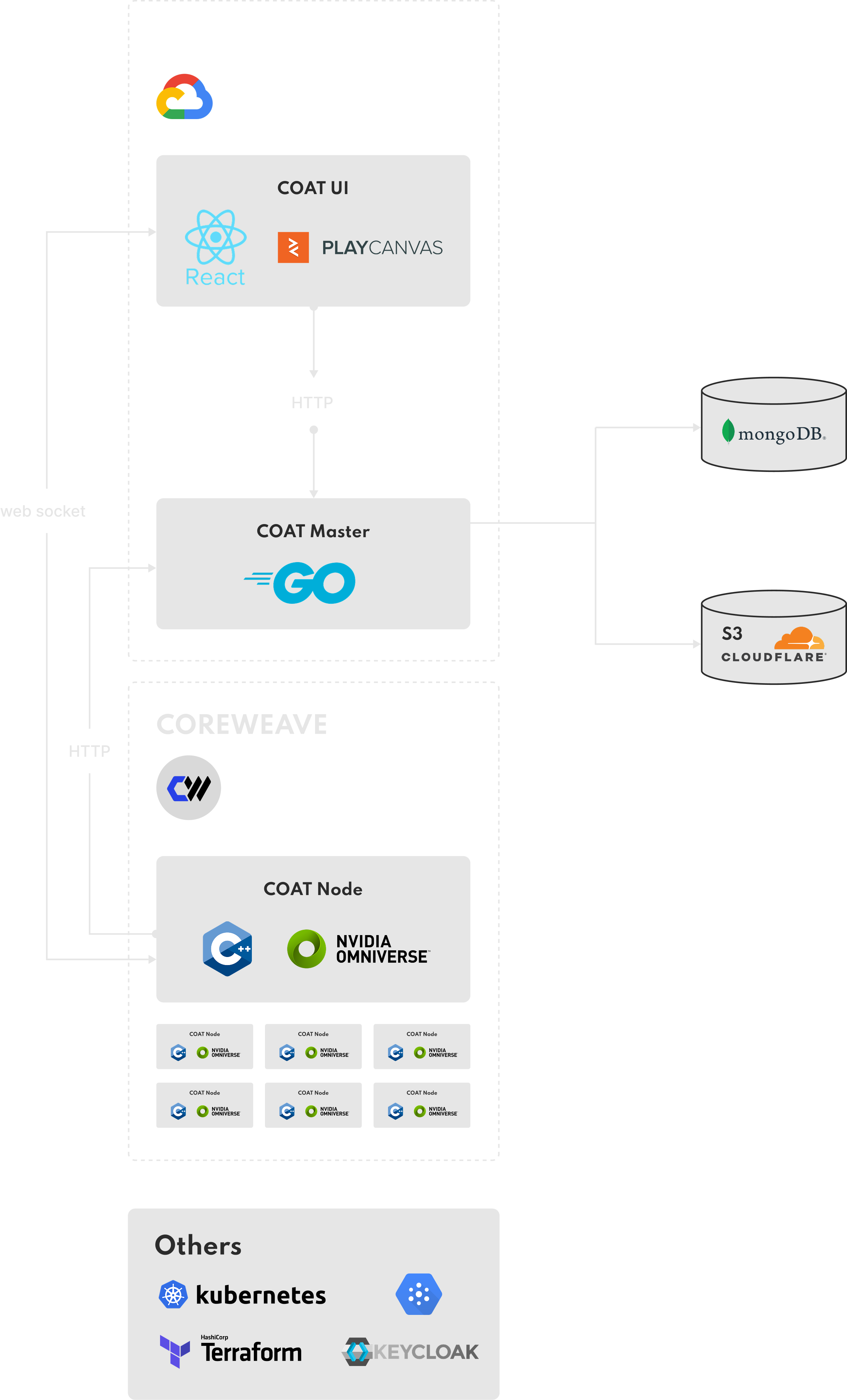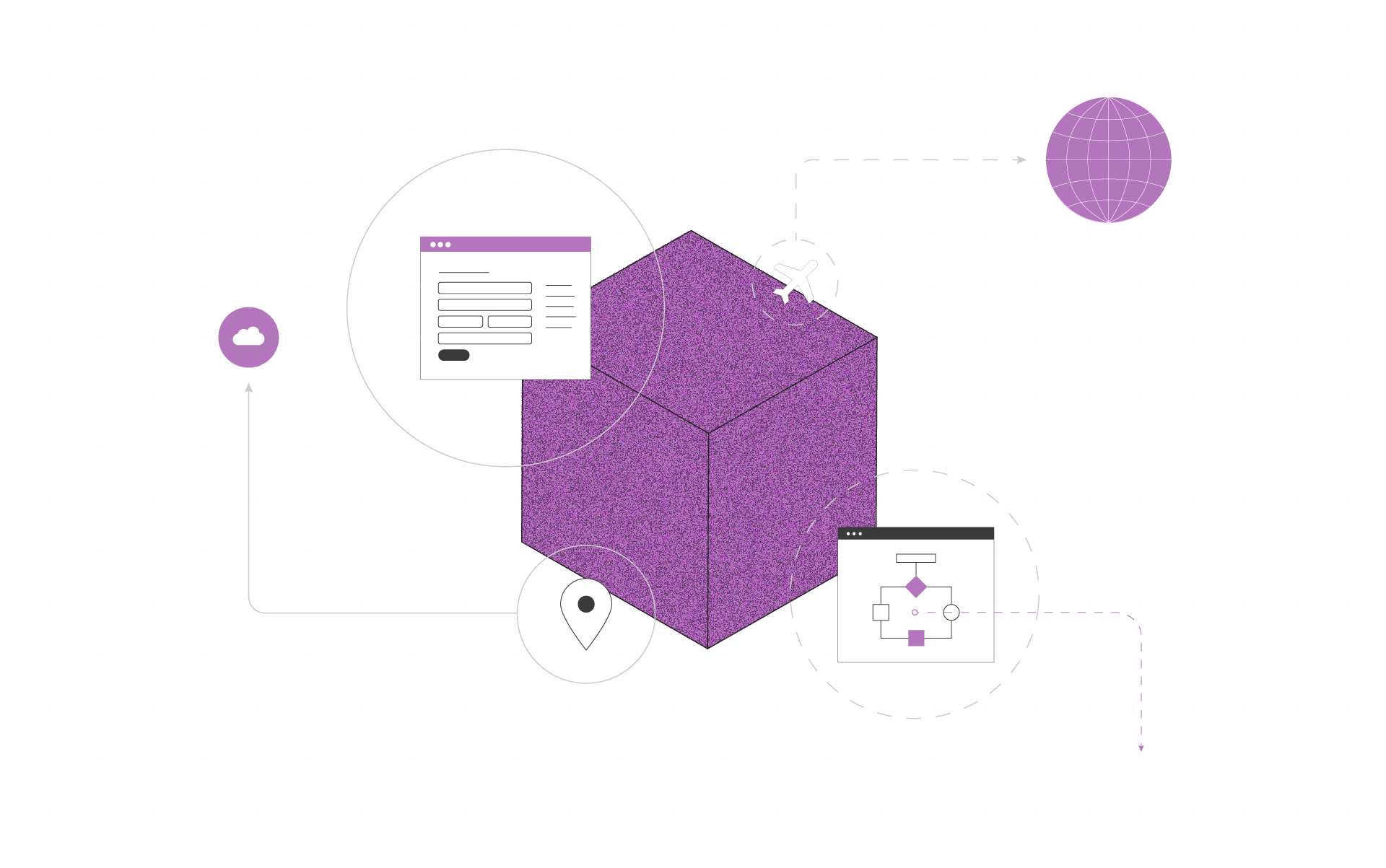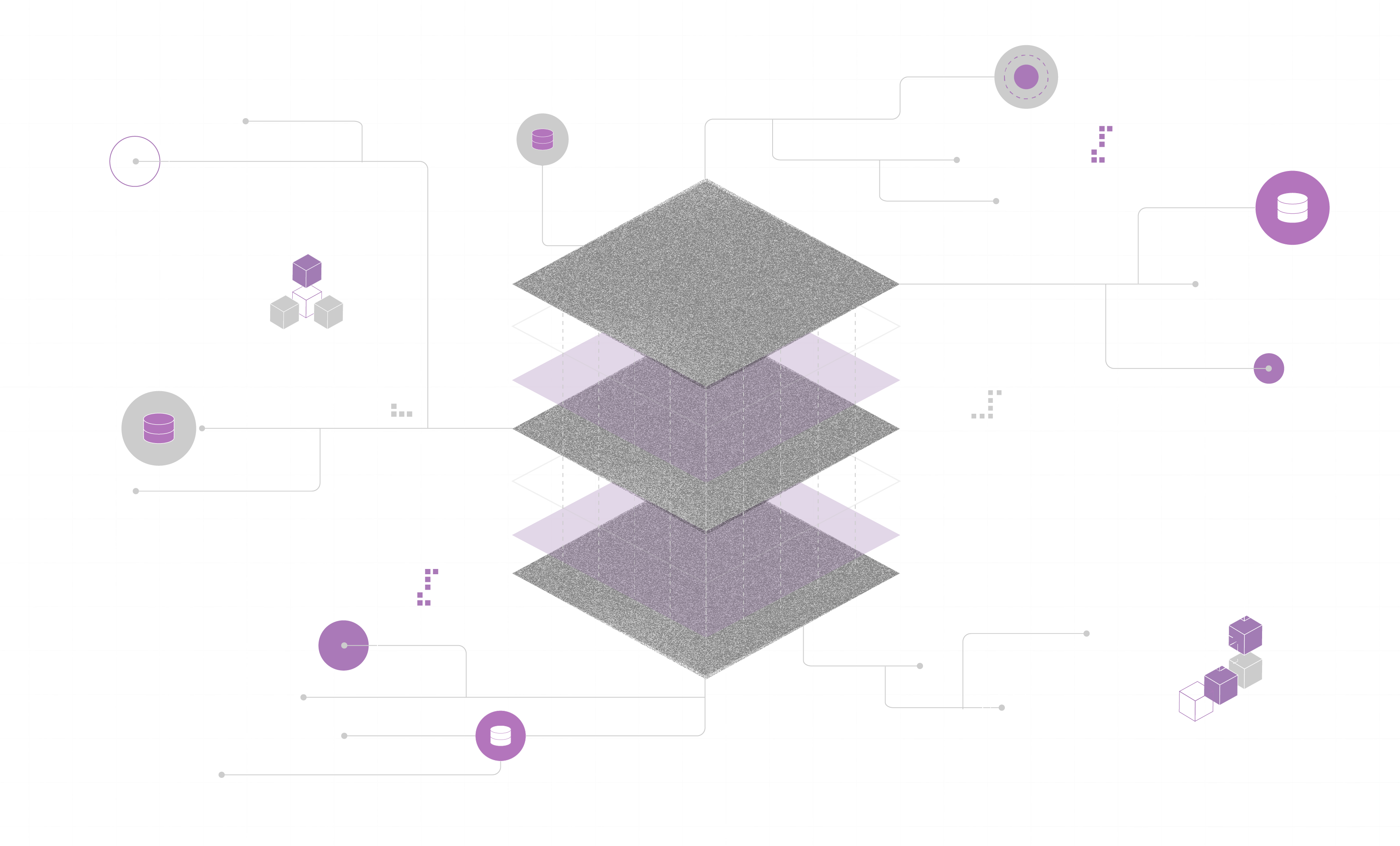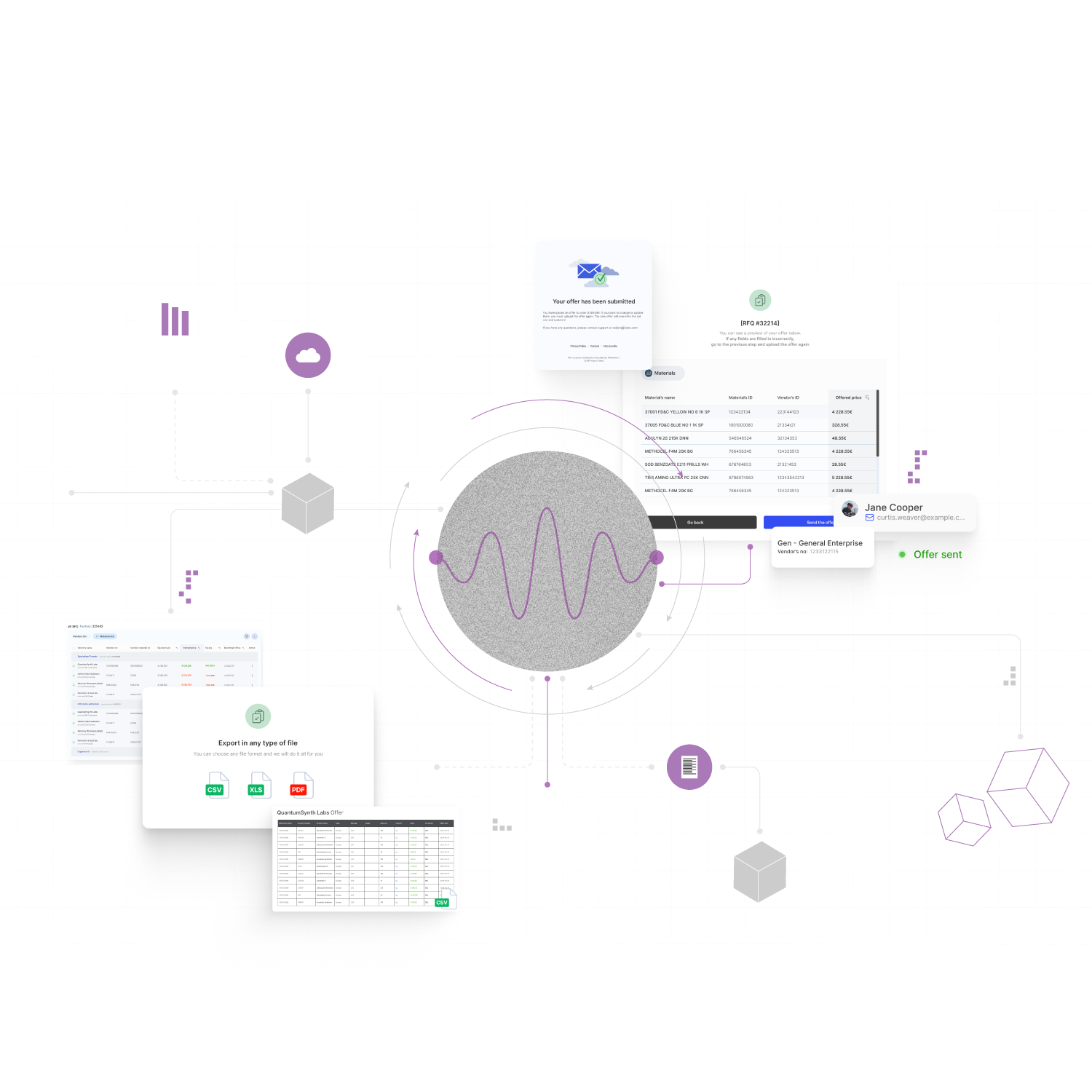Process & Story
Katana Studios, a creative technology company specializing in high-end CGI content for the automotive industry, set out to transform the way visual assets are produced and delivered. To support automotive brands in their shift toward real-time, personalized marketing, they envisioned a new kind of platform: a browser-based, cloud-native 3D content creation tool capable of rendering and streaming photorealistic visuals on demand.
The tool, COATcreate, had to enable configurability, collaboration, and rendering at scale, all without sacrificing speed or visual fidelity. Making that happen required more than creative ambition. It demanded a robust, multi-layered technical architecture that could handle compute-intensive GPU tasks, dynamic scaling, cost-effectiveness, and seamless user experiences across devices.
We joined the project as a technical partner, supporting Katana’s internal team with deep expertise in cloud architecture, DevOps, backend engineering, and frontend design. Our mission: help deliver a performant, secure, and scalable real-time rendering platform tailored to the unique demands of 3D workflows in automotive marketing.
Problem
Bringing a high-end 3D content creation tool into the browser isn’t just a UI challenge, it’s an orchestration of multiple advanced systems working seamlessly behind the scenes.
To deliver COATcreate as a production-ready platform for real-time automotive marketing, Katana faced a set of demanding technical challenges:
- The platform needed to support low-latency, photorealistic rendering of complex 3D scenes using GPUs, requiring a high-throughput compute environment with minimal delay.
- With GPU availability and pricing varying across providers, a flexible, multi-cloud strategy was essential to balance cost, scale, and reliability. The system had to support consistent orchestration across multiple cloud providers like Google Cloud Platform, CoreWeave, and Vultr.
- Ensuring responsiveness during peak load required cost-effective scaling of GPU-powered instances. That called for precise control over infrastructure provisioning and coordination.
- Supporting large 3D asset uploads meant addressing issues of speed, reliability, and failure recovery, especially over standard browser interfaces.
- The inclusion of real-time preview and interaction via WebRTC introduced additional demands on system latency, bandwidth, and synchronization, particularly with global users accessing the platform via Cloudflare’s TURN/STUN services.
- The original UI, built on a static canvas, lacked the flexibility and scalability needed for a production tool. A more modular and maintainable frontend architecture was required to support real-time user interaction and future growth.
Solution
To bring COATcreate to life, nexocode joined forces with Katana’s internal team to design and implement a modular, resilient architecture that could support high-performance rendering and live interaction, directly in the browser.
Our contributions spanned cloud infrastructure, DevOps, backend systems, and frontend architecture. Together, we helped lay the foundations for a platform capable of powering real-time product visualization at scale, combining AI-powered 3D content pipelines with a smooth, browser-based user experience.
The result of this cooperation, COATcreate SaaS product, is a browser-based, real-time 3D content creation tool designed to revolutionize automotive marketing. Built upon NVIDIA Omniverse and leveraging OpenUSD, it enables users to interact with CAD data, customize scene variants, and produce photorealistic renders, all within an intuitive and accessible interface.
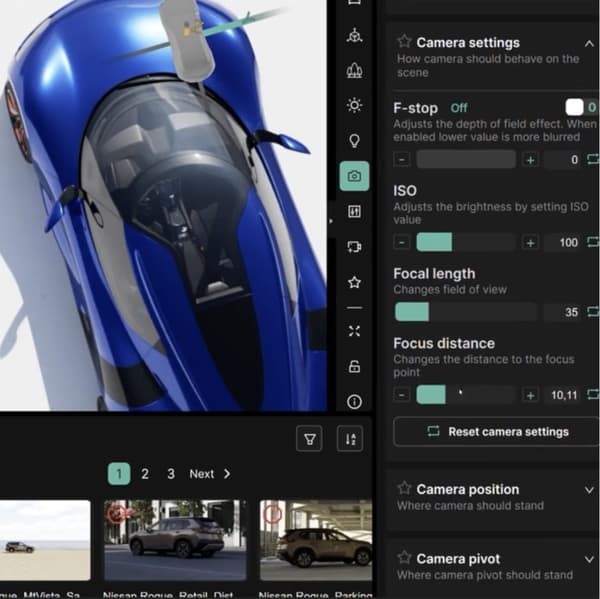
Outcomes
- Real-time rendering powered by high-performance NVIDIA GPUs
- Orchestration of multi-cloud GPU infrastructure(with Google Cloud Platform, CoreWeave, Vultr) for optimal performance and cost-efficiency
- Development of an asynchronous, microservices-based mechanism for fast and reliable upload of large 3D asset files
- Implementation of a custom Go-based communication layer with Kubernetes, ensuring predictable and economical scaling of rendering nodes
- A complete overhaul of the frontend, from a static canvas to an elastic, component-driven UI architecture, designed for flexibility and future growth
